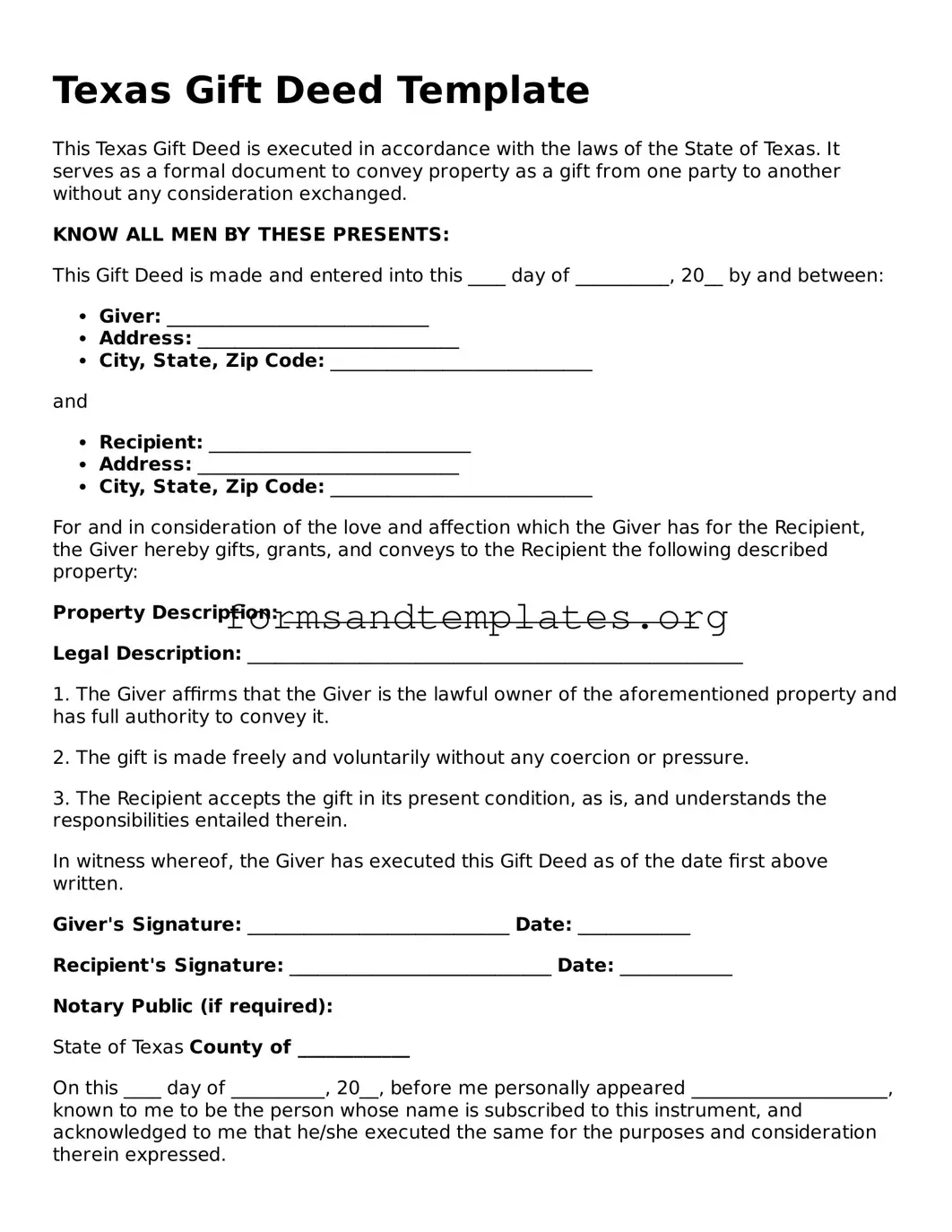Texas Gift Deed Template
This Texas Gift Deed is executed in accordance with the laws of the State of Texas. It serves as a formal document to convey property as a gift from one party to another without any consideration exchanged.
KNOW ALL MEN BY THESE PRESENTS:
This Gift Deed is made and entered into this ____ day of __________, 20__ by and between:
- Giver: ____________________________
- Address: ____________________________
- City, State, Zip Code: ____________________________
and
- Recipient: ____________________________
- Address: ____________________________
- City, State, Zip Code: ____________________________
For and in consideration of the love and affection which the Giver has for the Recipient, the Giver hereby gifts, grants, and conveys to the Recipient the following described property:
Property Description: ____________________________________________
Legal Description: _____________________________________________________
1. The Giver affirms that the Giver is the lawful owner of the aforementioned property and has full authority to convey it.
2. The gift is made freely and voluntarily without any coercion or pressure.
3. The Recipient accepts the gift in its present condition, as is, and understands the responsibilities entailed therein.
In witness whereof, the Giver has executed this Gift Deed as of the date first above written.
Giver's Signature: ____________________________ Date: ____________
Recipient's Signature: ____________________________ Date: ____________
Notary Public (if required):
State of Texas County of ____________
On this ____ day of __________, 20__, before me personally appeared _____________________, known to me to be the person whose name is subscribed to this instrument, and acknowledged to me that he/she executed the same for the purposes and consideration therein expressed.
Given under my hand and seal this ____ day of __________, 20__.
Notary Public Signature: ____________________________
Printed Name: ____________________________
My commission expires: ____________________________
